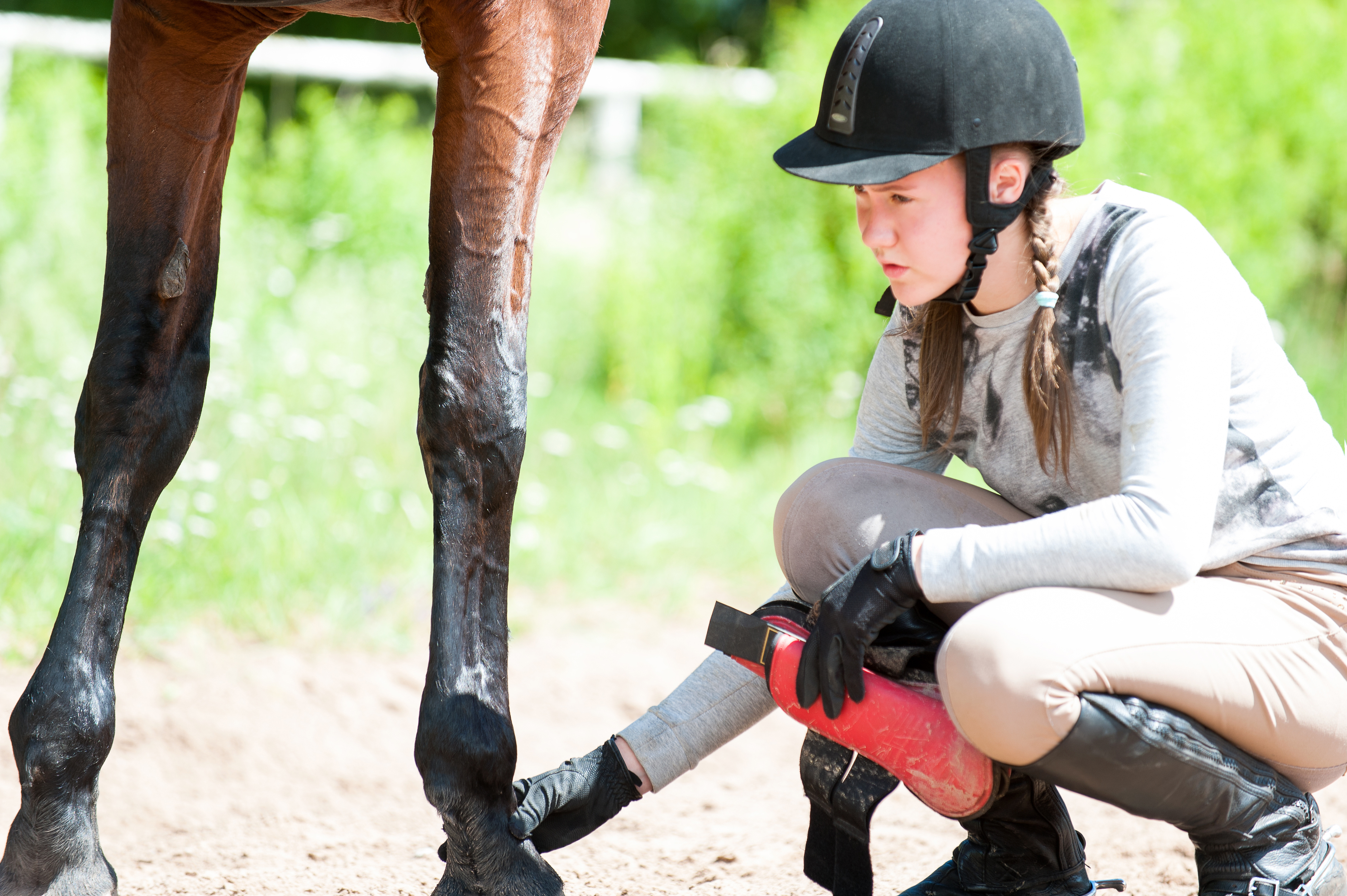The Cause of Cellulitis in Horses
- March 6, 2025
- ⎯ Equus
Q: My 15-year-old Arabian gelding is currently recovering from his second bout of cellulitis in his right hind leg in five years. He is being treated with an antibiotic, bute, cold hosing and hand-walking. Before I bought Boo he had become entangled in a barbed wire fence, which left him with proud flesh on the front of his right hock, the same leg that has been affected with cellulitis.
What causes this cellulitis in horses? Is it related to his old injury? How can I prevent further recurrences of cellulitis?

A: Unfortunately, many horse owners have experienced the frustration and the challenges of managing this condition. Cellulitis, also called septic cellulitis, is a bacterial infection of the soft connective tissues under the skin. It can occur anywhere on the body, but in horses the infection commonly occurs in one of the hind legs.
Cellulitis typically starts with sudden swelling that is warm and painful to the touch. As the infection progresses, the swelling may spread to affect the entire leg and the horse can develop a fever. Lameness may become so severe that the horse refuses to bear weight on the limb. Drainage may develop from cracks in the skin, and some horses become depressed while losing their appetite. The infection can progress to this point within a few short hours. Some horses develop life-threatening complications, such as laminitis or necrosis (death) of skin tissue, causing it to slough off.
Click here to learn about a quick and easy treatment for scratches.
The specific causes of cellulitis are unknown. In people, factors that increase the risk of developing this infection include poor circulation, disruption of the venous or lymphatic drainage from a limb, diabetes mellitus, presence of a foreign body, trauma, obesity and poor hygiene.
In horses, the predisposing factors for cellulitis are not completely understood, but poor hygiene, the bacterial population on the skin, decreased blood/lymphatic circulation and breaks in the skin are all thought to play a role. Many horses develop cellulitis after receiving a wound of some sort. The size of the wound does not seem to matter: A horse can develop cellulitis from a pinpoint puncture as easily as from a large laceration. Occasionally it occurs after an infection at a distant site on the body. In other cases, a predisposing factor is never found.
Most cases of cellulitis are treated with some combination of antibiotics and nonsteroidal anti-inflammatory drugs (NSAIDs) as well as hydrotherapy, bandaging, topical osmotic agents (to draw out fluids), physical therapy and good limb hygiene. The specific treatment protocol your veterinarian prescribes will depend on several factors, including the specific bacteria involved in the infection. Staphylococcus and Streptococcus spp. are the most common, but many different bacteria have been identified in cases of equine cellulitis. Your veterinarian will most likely suggest culturing the fluids and tissues to identify the bacteria before choosing an appropriate antibiotic.
As with your gelding, some horses develop repeat episodes of cellulitis. In a 2007 study from the University of Pennsylvania, 23 percent of the cases had at least one recurrence. Nonhealing wounds, like the old barbed wire injury on your horse, offer a perfect “port of entry” for bacteria that normally live on the surface to invade the underlying soft tissues and create new infections. Also, horses who have sustained extensive lacerations to the lower limbs may develop a “thicker” leg with compromised vascular and lymphatic circulation.
For horses like these, many veterinarians recommend that owners take preventive measures, including keeping the limb clean and using disinfectant soaps on all abrasions and cuts. Some veterinarians prescribe daily aspirin therapy to prevent cellulitis, but there is no scientific evidence that this is effective. I’d suggest discussing these recommendations with your veterinarian.
Also talk to your veterinarian about the level of work that is appropriate for your horse. Usually, though, I encourage my clients to maintain a routine exercise program with their horses. Activity improves circulation in the legs and may even help prevent cellulitis episodes.
Michael N. Fugaro, VMD, DACVS
Centenary College
Hackettstown, New Jersey
Don’t miss out! With the free weekly EQUUS newsletter, you’ll get the latest horse health information delivered right to your in basket! If you’re not already receiving the EQUUS newsletter, click here to sign up. It’s *free*!





